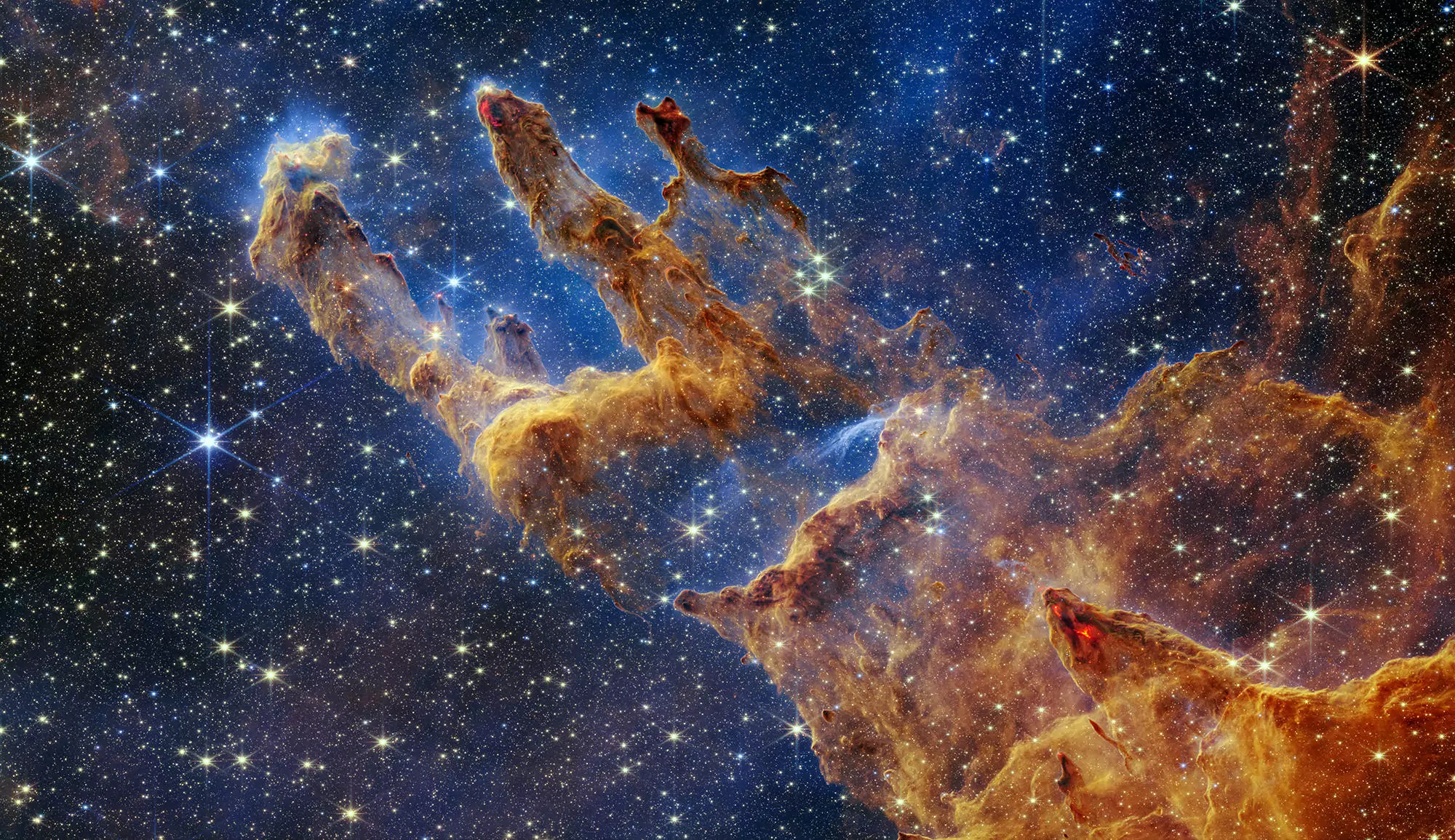

The term “solar granulation” refers to a grainy pattern (also called granulation, see Figure 1) observed on the Sun’s surface and identified for the first time at the beginning of the 19th century by William Herschel. The first photographs of this phenomenon were taken by Jules Janssen (astronomer at the Observatoire de Meudon). It was not until the 1930s that these structures were definitively attributed to convective motions on the surface of our star. Since the mid-20th century, many more accuate observations were performed, and increasingly sophisticated models of solar phenomena were developed, particularly from the late 90s onwards with the help of three-dimensional hydrodynamical simulations (see Figure 2).
These structures, which have sizes comparable to France, are very small compared to the size of the Sun. If it is relatively easy to observe them directly on the Sun, it is unfortunately not possible to visualize them directly on other stars. However, granulation constantly change over time, which produces very small fluctuations in the light of a star. The measurement of these fluctuations requires high precision instruments and long observation runs (weeks to months).
Thanks to its high photometric precision and long term observations, the CoRoT space mission was able to identify the signature of granulation in many stars [see Figure 3]. These observations also showed that the characteristic time-scale of this phenomenon varies approximately inversely with the characteristic frequency of the solar-like oscillations detected in the same star. This frequency (denoted numax) varies in turn as a function of two simple characteristics of the star : its gravity and surface temperature. The granulation time-scale therefore varies from one star to another in a self-similar manner, which gives the stellar granulation its universal character.

Since this discovery, the Kepler (NASA) space mission has measured the properties of granulation in an even larger number of stars from the main sequence to the red giant phase, through the phase of sub-giant. These observations have confirmed and extended the validity of the scaling relation found by CoRoT.
This relationship remained so far largely unexplained. This has motivated a theoretical work which has resulted in a model of stellar granulation . This model was then compared with observations made with Kepler . The theoretical calculations required 22 three-dimensional hydrodynamical simulations representative for the observed stars. These calculations confirm the dependence of the granulation time-scale with the characteristic frequency of the oscillations (numax). They reveal that this time-scale also depends on a characteristic number called the Mach number, which measures the ratio between the granule speed and the sound speed in the atmosphere [see Figure 4]. This number provides information about the velocity of the granules on the stellar surface.
This work allowed us to understand the partially unexplained link between the properties of the stellar granulation and those of the stellar oscillations. It finally reveals that this type of observations can provide a measure of the Mach number, which can be used as a constraint on models of stellar convection.

Notes
The CoRoT space telescope was launched December 26, 2006. Emerged from a French initiative, it was build under the project management of CNES in partnership with several French laboratories (CNRS) and cooperating countries (Europe, Brazil).
Kepler is a space observatory launched by NASA to discover Earth-like planets orbiting other stars. To know more about the Kepler satellite : http://kepler.nasa.gov/Mission/QuickGuide/
The 3D hydrodynamic simulations were calculated with the CO5BOLD code during the period 2005-2009 by the CIFIST team at GEPI (Observatoire de Paris). Each simulation required computational time of the order of months on a machine.
